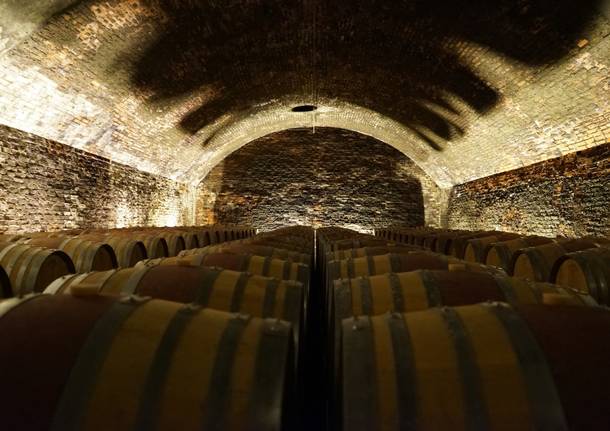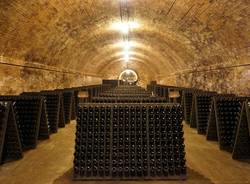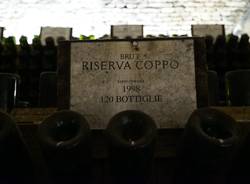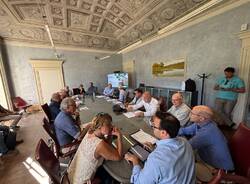On the hills of Asti, a journey to a World Heritage site of wine
Between the Langhe, Roero and Monferrato grow the vineyards that give life to Asti and Moscato d'Asti, the sweet wines par excellence that are known throughout the world

On the hills, vines grow and grapes ripen; underground, in a maze of tunnels and cellars, bottles wait years to be ready, before going to bring joy to the tables of the world. This is the charm of the territories of Langhe-Roero and Monferrato, a corner of Piedmont that is a world heritage site, where wines that are known throughout the world are born. It is from the almost 10,000 hectares of these vineyards that almost 90 million bottles of Asti and Moscato d’Asti, the two iconic sweet wines, appreciated from Russia to South America, are produced every year. The process, which has been going on for centuries, has shaped the territory, by which it has been influenced so much, that in 2014, UNESCO recognised the “Vineyard Landscape of Langhe-Roero and Monferrato” as an integral part of World Heritage. Harvest after harvest, this work has been carried on by 4000 wineries, requiring great care.
“Making sweet and aromatic wines is very difficult, and requires special care,” explained Guido Bezzo, the Technical Manager of the laboratory of the Asti DOCG Consortium, “which for us is equivalent to non-invasive, but very rapid processes: in order not to lose the substances that make our wines so recognisable, we must bring the grapes immediately to the cellar and start treatments that require great resources and large investments, but to produce Asti and Moscato d’Asti, there is no alternative. To maintain the sugar in the wine, for example, it is necessary to work at low temperatures, “and cooling hectolitres of must is not as easy as you might think; we continue to do it using the age-old techniques, but with increasingly hi-tech wineries.” The story of Asti and Moscato d’Asti keeps reinventing itself: a few years ago, some wine cellars started producing a dry version of the Asti Spumante. Given the extraordinarily fresh taste of the wine, with its clear hints of sage, lavender, apple and banana, this was an interesting experiment.
And the story that lies behind every cork and is whispered by every bubble, is increasingly appreciated, also by tourists, who have come to know these places. “Often, you’re not aware that you’re going through and experiencing places that have such an important history,” explained Stefano Riccagno, the Vice President of the Asti DOCG Consortium, “and this is the reason why we’ve started marking the area.” The roundabouts along the main roads, the entrances of the companies operating in this sector, and the vineyards will be decorated with the logos of the Asti DOCG Consortium. “Our job is to continue to make the most of this area and its traditions,” Stefano Riccagno added. “This place contains centuries of stories and effort, for example, to build the Underground Cathedrals in Canelli.”
Under the protection of UNESCO, there are those kilometres of tunnels and galleries, which were dug directly into tuff of the hills, between the 16th and 17th centuries, where millions of bottles now lie. Only in these spaces, whose silences recall the atmosphere that can be found in old cathedrals, with the protection of a thousand-year old land, was it possible to find the right temperature and constant humidity, that were ideal to produce exquisite wines and spumantes, which still today, mature here, waiting to conquer tables all over the world.
TAG ARTICOLO
La community di VareseNews
Loro ne fanno già parte
Ultimi commenti
Emanuele Zanetti su Motociclista di Ferno ucciso da un orso in Romania
GrandeFratello su Superate le 700 firme per la petizione sul recupero del Grand Hotel Campo dei Fiori di Varese
Felice su Motociclista di Ferno ucciso da un orso in Romania
Stefano64 su Neil Young torna dopo l'enorme successo di Harvest: ma non è il disco che tutti si aspettano
Alessandro Zanzi su Superate le 700 firme per la petizione sul recupero del Grand Hotel Campo dei Fiori di Varese
Felice su La bibliocabina, la panchina e il cane che fa pipì. A Fagnano Olona scoppia la polemica
























Accedi o registrati per commentare questo articolo.
L'email è richiesta ma non verrà mostrata ai visitatori. Il contenuto di questo commento esprime il pensiero dell'autore e non rappresenta la linea editoriale di VareseNews.it, che rimane autonoma e indipendente. I messaggi inclusi nei commenti non sono testi giornalistici, ma post inviati dai singoli lettori che possono essere automaticamente pubblicati senza filtro preventivo. I commenti che includano uno o più link a siti esterni verranno rimossi in automatico dal sistema.